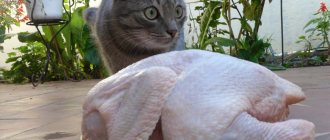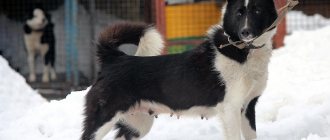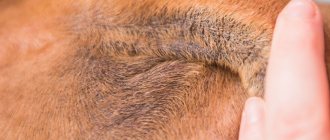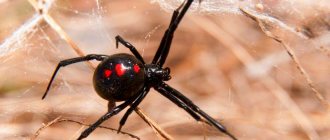In Russia, among poultry farmers, the Moscow black breed of chickens is especially favored by farmers. In terms of productivity, it belongs to the meat and egg direction. Poultry farmers note its undeniable advantages - adaptability to harsh climates, vitality, excellent quality of meat. For most farmers living in the Russian outback, this bird has become a favorite because it consistently lays large eggs.
Moscow black chicken breed
History of selection
The breed was created by Russian breeders - employees of the Moscow Agricultural Academy and the Bratsevo Poultry Farm in the second half of the 20th century. At that time, there was a need for universal chickens, from which eggs and meat could be obtained at the same time. Scientists faced another task - to breed a bird adapted to the local climate, a hardy, cold-resistant breed.
To achieve these goals, we decided to use the following breeds in breeding work:
- New Hampshire;
- Yurlovskaya vociferous;
- Italian partridge.
From New Hampshire, the Moscow breed of chickens inherited large carcass sizes and good quality meat characteristics. The ability to lay many eggs was passed on from Italian laying hens. The Yurlov vociferous line influenced the adaptive qualities of birds.
Yurlovskaya vociferous - the ancestor of the Moscow black chicken
Scientists selected the best representatives obtained by crossing and continued to breed them “in themselves.” In 1980, breeders presented the result of their work, the breed was registered, calling it Moscow black.
Description of the Moscow breed of chickens with photos
Both roosters and laying hens have a massive body with well-defined muscles. A distinctive feature of the Moscow chicken breed is its shiny black plumage. It is so thick and dense that birds are not afraid of even severe Russian frosts.
Red feathers on the neck
Females have fiery red or copper-red splashes on their necks, and in males they also decorate the shoulders and part of the back. Chickens are allowed to have white feathers, as shown in the photo, but they fall out after molting.
Birds exterior
Exterior features:
- rooster weight – 3.5 kg, laying hen – 2.5 kg;
- the head is large with a sharp-toothed, leaf-shaped red crest crowning it;
- neck of medium length with a slight bend;
- the iris of the eyes is orange or brown;
- the beak is black, short, very strong;
- earlobes white or red;
- the chest is massive, protruding forward;
- the back is straight, wide;
- the paws are unfeathered, strong, the metatarsals are dark in color with a green tint;
- the wings are well developed and tightly pressed to the body;
- the tail is of medium length, set low.
Reference. Hens have a slightly darker skin tone on their metatarsus than roosters.
Exterior of a rooster
Bird temperament
According to farmers who have experience keeping Moscow black chickens, the birds have a calm character. Although their genes contain information from the Yurlov vociferous birds, known for their fighting disposition, the birds have not inherited a tendency towards aggression. Of course, if a threat arises, roosters will rush to protect their laying hens and young animals, but they will not get involved in a fight without a reason.
Laying hens are noisy and love to cackle most of the day. Moscow chickens are quite active, so they need daily walking. Being in a confined space for a long time causes them stress.
Productivity
You can achieve high productivity from Moscow black chickens thanks to good care. If you follow all the recommendations for feeding and maintenance, the birds will delight the owner with the excellent quality of meat and a large number of eggs.
Moscow hen lays brown eggs
The average weight of a chicken ready for slaughter is 2.5 kg, a rooster is 3–3.5 kg. The carcass has a good presentation, it contains little fat, and the meat has a pleasant taste, although it is a little tougher than that of broilers. Laying hens mature at 6–7 months. During the first year of oviposition, each produces about 200 brown-shelled eggs weighing 58–62 g.
Attention! The egg production rate directly depends on the quality of the birds’ diet and living conditions. It takes about 200 g of feed to form 1 egg.
Maternal instinct
Among the Moscow black laying hens it is difficult to find a hen. They don't want to hatch chicks. To obtain a brood, you will need an incubator or a hen of a different breed. Out of 100 chicks, no more than 5 die by the end of the first week of life.
Description of the Moscow black breed
Also check out these articles
- Why don't quails lay eggs?
- Strawberry variety Monterey
- Melon Kolkhoznitsa
- Dendrobium Orchid
Chickens of the Moscow black breed are very beautiful and prominent, it is difficult not to notice them. Their bright plumage and proud posture give them away literally at first sight.
The bird's body is muscular (little fat) and wide. The sternum area is rounded and the back is straight. The tail is large, most noticeable in roosters; in chickens it is more modest. The wings of the individuals are large and well developed, so it is not recommended to release them into an enclosure with a low fence - they will fly over. The lobes are white or red - both options are common. The neck is of medium length. The legs are set wide apart and are of medium size.
Chickens of the Moscow black breed are very beautiful and prominent, it is difficult not to notice them
The head is large, the comb is medium-sized, erect, scarlet, and stands out against the general background of the plumage. The eyes are slightly bulging and orange according to the standard, but there are many subspecies whose eye color can be light or dark. The beak is black, medium size, slightly curved.
The Moscow black breed of chickens is covered with thick, shiny, dense black plumage, however, there are individuals that have a golden tint to the feathers. In chickens it is in the back of the neck, and in roosters it is on the back and wings.
Advantages and disadvantages of the breed
The Moscow chicken breed deserves the attention of farmers due to its many advantages:
- adaptability to the climate of the middle zone;
- high egg production;
- large carcass sizes;
- undemanding to living and feeding conditions;
- beautiful appearance;
- calm character.
The breed is not without its shortcomings. For example, the lack of brooding instinct in laying hens. The disadvantages include the late onset of puberty. Hens begin laying eggs by the age of seven months, sometimes later. Birds are prone to obesity, so you will definitely have to build an aviary for them where the birds will walk.
Description and characteristics of the breed
When breeding black chickens, you should first familiarize yourself with their description. The breed has a number of individual characteristics and characteristics.
Productivity
At the age of 6 months, hens begin to lay eggs with cream or pale brown shells. The egg production rate varies between 210-230 eggs weighing up to 62 g. With the most favorable environment, productivity increases by 15-20%.
The live weight of chickens is 2-2.3 kg, of roosters - 2.7-3.5 kg. Thanks to the well-developed muscle mass, the meat of birds of this breed is tastier in comparison with egg-laying varieties.
Appearance
Moscow black hens are distinguished by their neat and unusual appearance. Chicks are born dark, and as they develop they develop dense black feathers with a shiny surface. Many chickens develop golden-copper feathering on their necks. Roosters are distinguished by the presence of light feathers on their backs and shoulders.
Chickens have a wide head with a medium-sized curved beak and an erect large red comb, dark orange eyes and red and white lobes. The outline of the body is convex, the back is oblong, the paws are set wide.
Hatching instinct
The Moscow Black breed has a poorly developed brooding instinct. It is recommended to use an incubator for breeding chickens.
Conditions and care
Farmers claim that Moscow black chickens can be kept in unheated barns. The main thing is to properly insulate the walls, roof and floor so that there are no gaps anywhere through which cold air penetrates. It is recommended to lay a bedding of sawdust and peat 15–20 cm thick on the floor. In winter, they do not change it, but only remove the top layer and add a new one. The flooring is completely removed in the spring and autumn, when they do a general cleaning of the poultry house, and a clean one is laid down.
Moscow chickens can live in an unheated chicken coop
Standard requirements for arranging a chicken coop:
- location on a hill, which will avoid flooding during prolonged rains and melting snow;
- the presence of at least a primitive ventilation system to remove harmful ammonia fumes and maintain normal humidity levels;
- connection to the electrical network - in winter you will have to artificially increase daylight hours with the help of light bulbs;
- height of resting perches – 80 cm;
- the presence of a window for access to sunlight;
- reliable protection of the premises from rodents;
- a sufficient number of drinkers and feeders and their convenient placement in the poultry house;
- For every 3-4 laying hens you will need 1 nesting box.
The birds are kept clean. The feeder and drinker are washed daily to avoid the spread of infectious diseases. Representatives of the Moscow Black breed can live in an unheated poultry house. Egg laying in laying hens does not stop, even if the temperature in the barn drops to +1 ºС. In the northern regions, you will have to take care of heating the chicken coop in winter. To maintain heat, you can use a stove, radiator or infrared lamps.
Attention! Birds need an ash bath to clean their feathers of skin parasites.
Walk
Moscow breed chickens love to walk in the fresh air. To satisfy this need, you will have to build a spacious enclosure. It is connected to the chicken coop by a manhole and equipped with a canopy. The territory of the walking yard is sown with grass, which birds love to peck.
Chickens need regular walking
In summer, laying hens spend most of their time outside - they go out at dawn after distributing feed, and return to the coop after sunset. In winter, the duration of walks is limited to an hour and a half. Thick, dense plumage prevents the birds from freezing, but their paws and combs remain unprotected from frost. Staying outside for a long time can lead to frostbite.
Caring for Moscow chickens during molting
Seasonal feather change begins in the fall, in September-October, and lasts 2 months. During this period, birds become vulnerable to infectious diseases. The immunity of birds weakens because most of the body's resources are spent on the formation of new feather cover. During molting, egg production decreases, which is then completely restored.
It is very important to improve the quality of care for chickens when they lose feathers:
- protect birds from cold, draft and dampness;
- monitor the cleanliness of the poultry house;
- give laying hens a vitamin complex;
- introduce more vegetables into the diet;
- Give the chickens chalk, shell, bone meal.
Proper feeding is the key to high productivity
Black chickens of the Moscow breed are undemanding when it comes to food supply; they eat everything that the farmer gives. However, their health and productivity depend on the quality of their diet. Meals should be varied and include:
- protein-rich cereal mixtures;
- greens - fresh grass in summer and grass pellets in winter;
- vegetables - carrots, zucchini, pumpkin, cucumbers;
- legumes – lentils, peas;
- mineral supplements - crushed eggshells, chalk, shell rock, fish oil, bone and fish meal;
- fermented milk products – low-fat cottage cheese, whey.
Add herbs and vegetables to the mash
Feeding is done 2 times a day in summer and three times a day in winter. During the cold season, chickens happily eat warm, moist mash with added vegetables, cooked in broth or whey. Such food is distributed during lunch hours. In the morning and evening, birds are fed mainly with grain.
Features of raising chickens at home
Farmers who are interested in breeding Moscow black chicken will need an incubator - laying hens have lost their brooding instinct. Representatives of this breed reach sexual maturity at 7 months. Eggs for incubation are taken from birds that meet the standard and have reached the age of 10–12 months.
Chickens of the Moscow black breed are born with dark down. Their gender cannot be determined until they are one and a half months old. Chicks have strong immunity and good survival rate. The fertilization rate of eggs is also high and amounts to 95%.
Chickens of the Moscow black breed
The hatched chicks are immediately placed in the brooder. There they are kept at elevated temperatures on dry and clean bedding. The first food for babies is a boiled egg. On day 3, new products begin to be introduced - green onions, steamed millet, low-fat cottage cheese, grated carrots. Chickens are switched to whole grain feed by the age of one month.
Analogs
Other meat and egg breeds of chickens are also popular in Russia. For example:
- Kuchinskaya. The birds were bred in the Moscow region. Features and advantages - adaptability to the climate of the middle zone, vitality, unpretentiousness, heavy weight - 3-4 kg, high egg production - 230-240 eggs per year.
- Zagorsk salmon. Bred in Sergiev Posad in the mid-20th century. Features: autosex of chickens, rapid weight gain, early onset of egg laying, number of eggs per year 180–200, developed brooding instinct.
- Pervomayskaya. The breed is of Ukrainian origin, one of the most popular in Russia. Advantages - impressive appearance, endurance, egg production - 200 eggs per year, tasty meat. The young animals have good vitality, egg fertility is 100%.
Pervomayskaya chicken - an analogue of Moscow black
Characteristics of the Moscow black breed of chickens
We recommend reading our other articles
- Main spring gardening tasks
- How to freeze zucchini
- Barbesier chicken breed
- Strawberry variety Albion
The breed has a meat-egg orientation, this is one of the reasons for the popularity of the bird, because the breeder can get from it not only tasty meat or eggs, but all at once.
- Egg production – 200-220 eggs per year from one hen. Medium-sized eggs - 60 g. The shell is brown, dense.
- Egg fertilization is 90%. To increase the percentage, it is worth feeding females and males with vitamin supplements, which are usually simply mixed with food. Hatching rate is usually 92%.
- The weight of a rooster is 3.5-3.7 kg, hens - 2.5-3 kg.
The Moscow black breed of chickens is not one of the most massive individuals, but on the other hand, it is distinguished by its early maturity. Young animals grow quickly and gain weight with normal feeding. The taste of the meat is excellent. Many chefs praise it, distinguishing it from all other chicken breeds - The taste of the meat is excellent. Many chefs praise it, distinguishing it from all other chicken breeds. It has a delicate texture, cooks quickly, is nutritious and juicy.
- They rarely get sick; thanks to the work of breeders, the immune system of the Moscow Black breed of chickens is very good. They quickly acclimatize, get used to different temperatures and living conditions, and their body actively works in winter to maintain strength, energy and health. Still, it is better not to forget about routine vaccination.
Among the disadvantages, there is a lack of brooding instinct and the fact that chickens begin to lay eggs late - at 6-6.5 months.
Farmer reviews
Poultry farmers speak positively about the Moscow breed of chickens. Belgorod resident Zinaida is happy with her choice. She emphasizes the advantages of Russian poultry - endurance, unpretentiousness, stable egg production. According to the woman, one of the main advantages of laying hens is resistance to cold.
Gennady from Krasnoyarsk also praises Moscow chickens. He notes that they are easy to care for, the meaty carcasses have a pleasant taste, and the chickens hardly get sick. According to the farmer, the birds continue to lay eggs even in winter if they receive good nutrition and regularly go out for a walk.
Domestic selection chickens are ideal for a small private farmstead. They easily endure our harsh winters, lay steadily and grow quickly. At the same time, caring for birds is simple, and food costs are minimal. It is also encouraging that laying hens have stable immunity and a calm character.
The video shows Moscow black chicken chickens.
Breed characteristics
Moscow black hens are excellent both as laying hens and as suppliers of wonderful dietary meat. This breed was obtained by crossing Leghorns with Yurlovsky chickens and New Hampshires. The first endowed her with high egg production, the second with enviable vitality and a loud voice, and the third with a large body.
General external signs
If we talk about general exterior characteristics, it can be noted that the Moscow black breed of chickens is characterized by:
- Wide head with leaf-shaped erect crest;
- Black, medium-sized, curved beak;
- Protruding orange eyes;
- The lobes are either red or white;
- Moderately long neck;
- Convex and wide chest;
- Developed, straight and long back;
- Medium-sized and wide-set legs;
- Superbly developed tail and wings.
Moscow black chickens - photo
As for the color of the plumage, it can only be black in a purebred chicken. At the same time, the hen can be decorated with a golden mane, and the cockerels can boast golden feathers in the back and shoulders.
Disengagement zones
The largest concentration of farms engaged in breeding chickens of the Moscow black breed is concentrated in the Moscow region. Although the chickens themselves can be found in farmsteads throughout the Russian Federation.
Productivity of Moscow black chickens
It is possible to achieve high productivity rates from Moscow Black chickens with fairly good care. If all feeding and maintenance conditions are met, the birds will delight their owner with both the excellent quality and proper amount of meat, as well as a sufficiently large number of eggs laid.
Eggs
One laying hen of the Moscow black breed of chickens can lay up to 220 eggs per year, the average weight of which is 60 grams. In this case, the shell will have a pleasant brown color. As for the egg fertilization rate, it is very high and can reach the level of 90%. At the same time, about 92% of chickens can hatch from the resulting number of eggs.
Meat
It cannot be said that chickens of the Moscow black breed are record holders in terms of meat productivity. Both cockerels and hens are very miniature. However, for small farms the weight of a male individual is about 3.7 kilograms, and a female one - 2.8 kilograms, which may be more than sufficient.
Breeding Features
Moscow black hens are famous for their calm and unpretentious character. This makes keeping them a pleasure. An ordinary stationary poultry house with access to the street, fenced with a low fence, will be sufficient. Birds of this breed are quite stress-resistant, which is why they can easily tolerate moving to another climate zone. In order for laying hens to produce the required number of eggs, it is necessary to provide them with food rich in mineral supplements and vitamins, as well as dry bedding.
Chicks can also be hatched in incubator conditions. The only additional condition in this case is to monitor the correct position of the egg. The formation of an oxygen compartment in its blunt part depends on this, which allows the baby to breathe before the hatching process.








